How to Prep Your Devices for iOS 14 and watchOS 7 Today
Ah, finally. It’s time for Apple’s latest operating systems for iPhone, iPad, Apple Watch, and Apple TV to release to the masses. Public betas, be dam

Whether you’re a spy or a geek, there are plenty of ways to share and receive files with others without revealing anyone’s identity. Whatever your reasons for needing this secrecy, whether as the host or the submitter, it’s easy to set up a virtual dumping ground for your data—top-secret or otherwise mundane.
A brand-new version of the popular OnionShare app dropped the other day, and I recommend giving it a shot if you’re looking to make clandestine connections with friends or internet strangers. The open-source app uses the power of Tor to manage the transfers, basically guaranteeing people anonymity—so long as you’re smart about it and aren’t, say, using your real-life Facebook account to share a link to your OnionShare-based dropbox.
To get started, download and install the free OnionShare app (for Windows/macOS/Linux). Launch it, and you’ll automatically start connecting to the Tor network. Once that’s done, you’ll be able to pick from a few different options on OnionShare’s main screen:
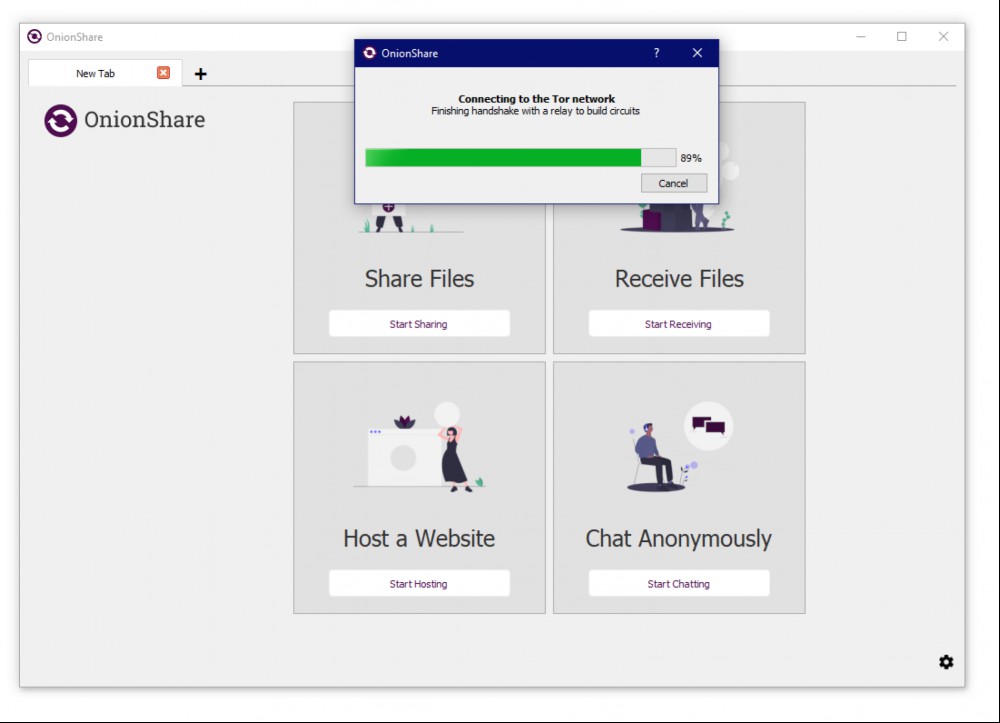
One of the fun upgrades in OnionShare 2.3 is that each of these features now launches in its own tab. In previous versions of the app, you couldn’t elect to receive files and send files to someone else at the same time. Now, you can do everything—file-sharing, website-hosting, and anonymous chatting—at once.
If you want to set up a dumping ground for incoming files, simply click on the “Start Receiving” link under Receive Files. You’ll be asked where you’d like these files to be saved on your system:
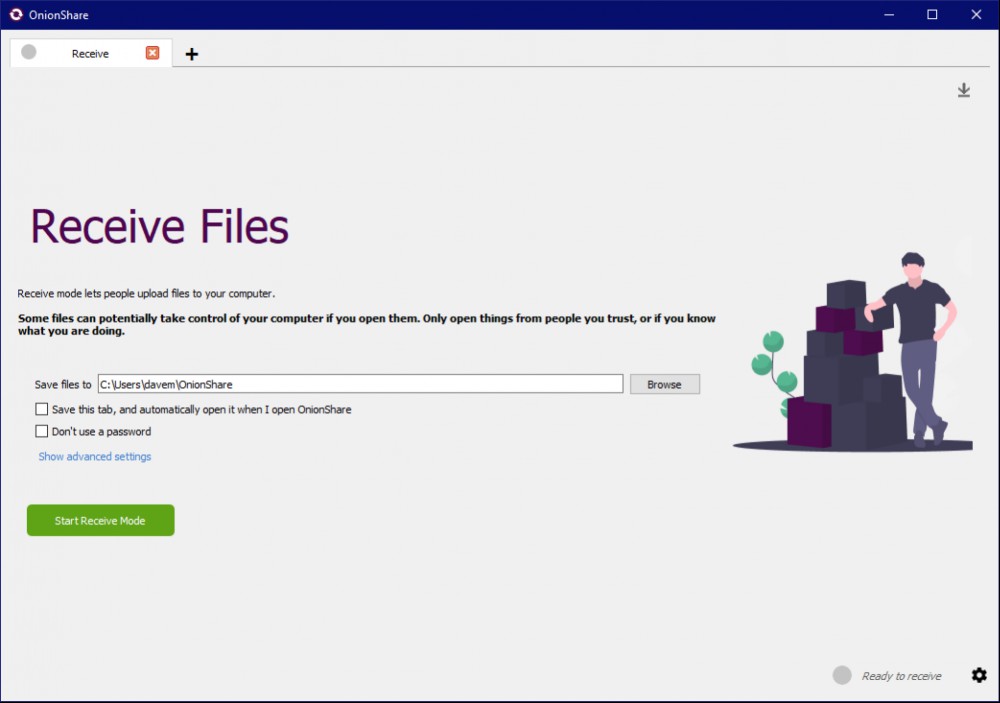
Hit “Start Receive Mode,” and you’ll get a special web address. Copy and paste it to people—ideally individual people you know, and not, like, a web forum—and they’ll be able to use the Tor browser to send files your way.
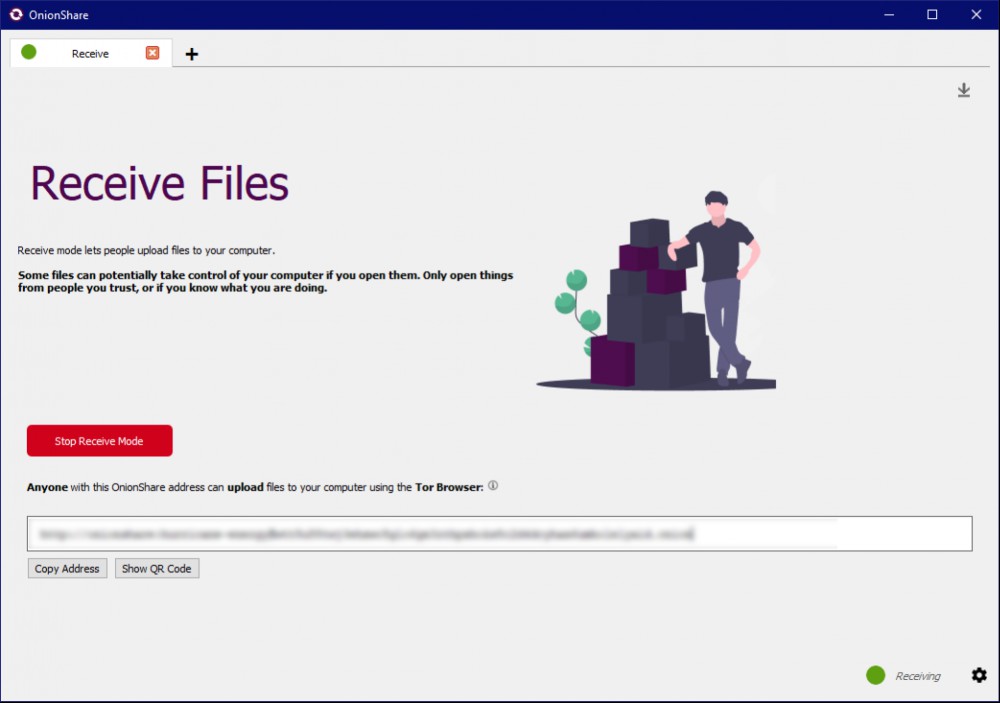
Those sending you files via their Tor browsers will see a simple screen that looks like this:

And that’s it. Sending files from one system to another is simple, but it will take a bit of time. At least, it felt like the 86MB I transferred took far longer via Tor than your typical file upload/download from the web (as one would expect, given how Tor works).
Click on the little down-arrow icon in the upper-right corner of OnionShare to see what people have sent you and when. You can also quickly jump to a file’s location on your system by clicking on the icon to the right of its listed size:
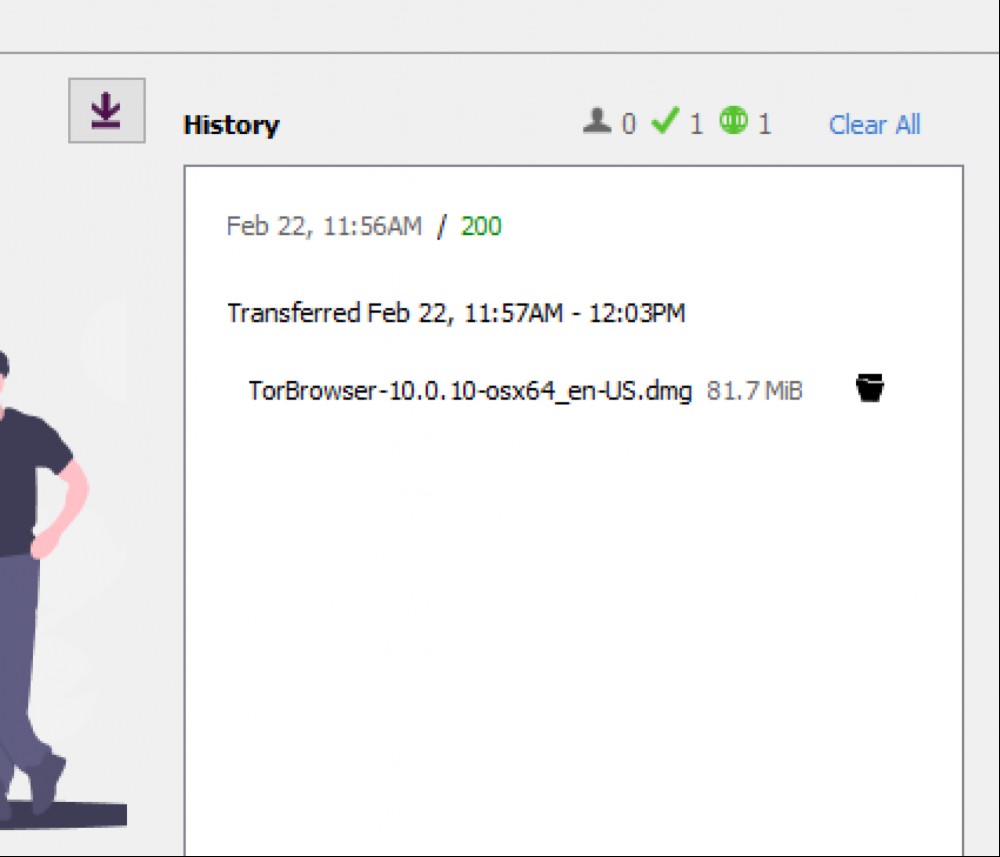
While you have your receiving line running, you can also fire up a new tab using the “+” icon in the upper-left corner of OnionShare’s window and do something else—like share a file with someone else, for example. Launch the “Share Files” feature from OnionShare’s main menu and drag and drop something into the window:
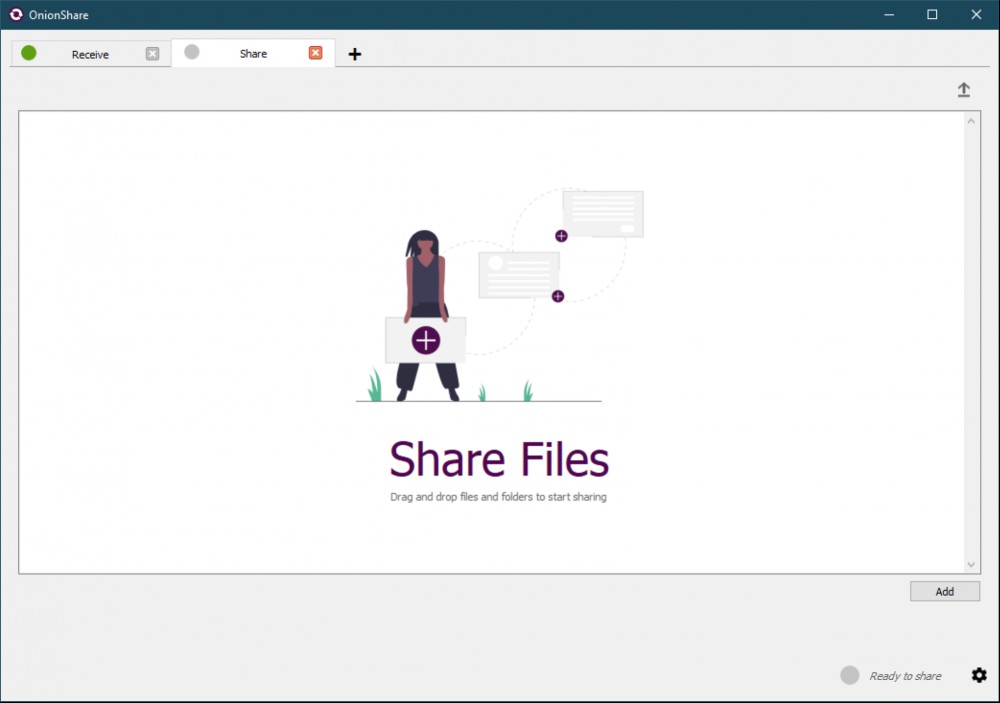
You’ll need to click the big Start Sharing box to do just that. When you do, you’ll get another OnionShare URL that you’ll need to send to others. They’ll launch the URL in the Tor browser to grab your file.
I haven’t played around with OnionShare’s Host a Website or Chat Anonymously features, as I have no interest in either—especially the latter. Plus, then you’re using your own bandwidth to host a website that anyone can visit if they have the special URL (and the Tor browser, of course), and your ISP might frown on that if you get incredibly popular. To be fair, the Chat feature sounds more ominous than it actually is; it actually launches a chat server that others connect to over the Tor browser. You too, as you can’t just chat with people connected to your server via OnionShare itself; you’ll have to fire up the Tor browser to participate. And all you can do is talk—no file- or image-sharing, for example.


Ah, finally. It’s time for Apple’s latest operating systems for iPhone, iPad, Apple Watch, and Apple TV to release to the masses. Public betas, be dam

Google’s “Launch Night In” gave us an overview of the company’s upcoming hardware releases, including two 5G Pixel phones, a new Nest Audio speaker, a

You can now install YouTube as a progressive web app (PWA) on Windows. What does this mean? PWAs are like desktop shortcuts to websites that run in th

Many Twitter found their display settings suddenly changed without warning today. For some—including me—the app swapped from the “Dim” dark mode to th

As Twitter rolls out its new Twitter Blue subscription service, some of us still long for the olden days when the timeline was nothing more than a bun

Making iPhones and Android devices work together isn’t quite the challenge it used to be, but it can still be frustrating. Apple’s ecosystem is locked

You can now demo Windows 11 from your internet browser, thanks to a new webpage created by a resourceful developer known as “Blue Edge.” The webpage l

There’s a lot of hype around how many cores a device’s CPU (aka Central Processing Unit) has. It’s common to hear people say that more cores equals mo
We are a comprehensive and trusted information platform dedicated to delivering high-quality content across a wide range of topics, including society, technology, business, health, culture, and entertainment.
From breaking news to in-depth reports, we adhere to the principles of accuracy and diverse perspectives, helping readers find clarity and reliability in today’s fast-paced information landscape.
Our goal is to be a dependable source of knowledge for every reader—making information not only accessible but truly trustworthy. Looking ahead, we will continue to enhance our content and services, connecting the world and delivering value.